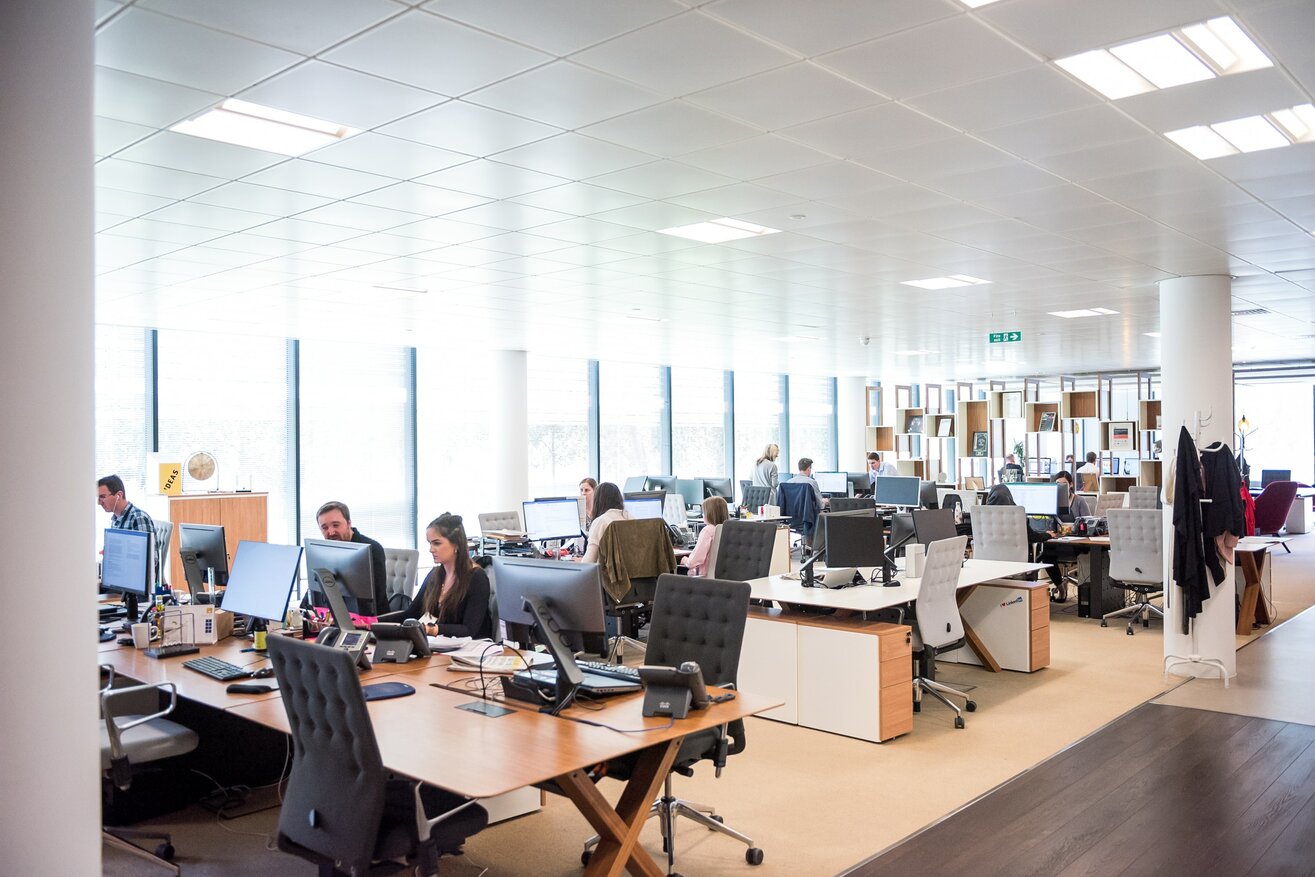Navigating inter-generational dynamics in the workplace

Becky Mackarel, Lead consultant for Odgers Interim Professional Services and Investment Practice, speaks to Alexis Caught, Møller Institute, to discuss his research and experience consulting on the inter-generational dynamics in the workplace to offer his advice on navigating generational divides
Our workplace is changing as people increasingly retire later and join the workforce earlier. For many organisations, there are currently four or even five generations working side-by-side. This growing multi-generational cohort brings diversity of people and of thought, but also challenges as conflicts arise. With each age group comes a difference in world view and a set of specific generation values which guide their everyday actions and behaviours. These opposing views can bring a level of tension between co-workers as their working styles clash. Whether in their communication style, their level of team engagement or where their loyalties lie, each generation’s unique perspectives need to be acknowledged and embraced for a more harmonious workplace.
To discuss this further, I spoke to professional service firm’s strategy consultant Alexis Caught. Now working for the Møller Institute at the University of Cambridge, Alexis has developed a specialism in inter-generational dynamics in the workplace and how firms need to adapt to a changing work force. Here are his thoughts and advice on navigating inter-generational dynamics in the workplace:
1. Where do the main tension points lie between the generations in the workplace?
As Millennials have entered the workplace and become a more established demographic alongside Gen Y and Baby Boomers, there have been key points of tension: day to day ways of working, attitudes towards feedback and collaboration as well as differing aspirations and increasing scrutiny of the corporate treadmill.
The Millennial generation has faced numerous setbacks in their career progression and is on record as the first generation ever to be financially worse off than those before them. This started with the introduction of university fees, then came the 2008 financial crash as new graduates entered the workplace, retrospectively applied interest rates on government loans, rising house prices and cost of living against a backdrop of 10 years of austerity meaning standards of living have actually decreased. For this generation, professionals are working more hours with an increased workload but with constantly changing goalposts and diminishing returns. But is it all about money for younger generations? No – interestingly, when interviewing a cohort of associates it was best summed up why they actively did not want the highest salaries because “people who are just in it for the money, are awful to work with, there’s no loyalty, no team, they’re just in it for themselves” instead, associates were happy to be more ethically and socially aligned with their colleagues and workplace. Where pushes for more money come from, is that the legal industry has created a culture (and expectation) where money becomes a one-size-fits all sticking plaster for all workplace frustrations and issues. Working too long? More money. Not getting enough sleep? More money. Not being treated well? More money!
Not only do Millennials seek out more purpose from their jobs (they aren’t necessarily just motivated by high salaries), but they care about ethical business practices and positive workplace environments. And scrutiny is only increasing, at the beginning of this year we saw large numbers of top students boycott a US law firm for their ties with a big oil company and refuse to interview there on ethical grounds. The younger generations are not just looking for change, but finding ways to demand it – increasingly with their feet. For law firms, they are discovering that they may be able to buy silence or buy time from associates, but they can’t buy loyalty.
2. How has each generation defined workplace culture?
The formative years of each generation have been vastly different, giving each a different attitude and approach towards work. From the socioeconomic perspective in the UK, the politics of the country from the Cold War through to Thatcher and then Blair years have immensely impacted the career values of each generation. The Baby Boomer generation set up the firms and the current corporate culture during the years of high cash flow, but their “work hard, play hard” complex is not complimentary to the younger generations. Gen X, who have followed are much more inwardly focused, aiming to work autonomously and driven by efficiency – again, increasing personal take-home salaries for those at the top, but often fuelled by “efficiency savings” which place a burden on junior members of staff.
In order to keep up with demands for continual growth, manufacturing industries adopted a practice known as ‘sweating assets’ – essentially running machines for longer. For people industries such as law, this ‘sweating assets’ has meant working people harder, and for longer hours. In law firms we have seen the billable hours go from 1300 per year to 2000+ – and no, we haven’t miraculously found more days in the year, but lawyers have elongated working hours at the expense of their social, familial, physical and mental health.
This approach, however, is not fitting to Millennials and the incoming Gen Z workforce. Rather than being solely driven by high salaries and status, they are more focused on purpose and achievement, as well as feeling fulfilled. This is where the real challenge of talent retention lies as firms resist adapting culture and so risk being out of step with modern expectations.
3. Why do generational differences need to be addressed? What will the consequences be if action isn’t taken to resolve this?
Well, answering simply, the main issue is sustainability. Wrapped up in these dynamics is the challenge of retaining future talent. In my research we have seen associates increasingly dissatisfied with their jobs, making reference to inefficiencies and unhealthy workplace environments. However, firms are unaware of this rising sentiment amongst lower level employees.
Firms also need to consider the future pipeline of their talent. Traditional organisations have been built around the idea of the ‘cream rising to the top’ to take leadership positions, but increasingly this isn’t working anymore as the best associates are seeking employment elsewhere, outside of private practice, where jobs and career paths are more people-centric and designed to meet their career aspirations, personal needs and values. The future risk for law firms, is that the “best and brightest” are realising the game is rigged against them, and are opting out, creating a talent drain.
The issue also lies in salaries and relationships with clients. Last summer we saw the salaries of trainee lawyers skyrocket. Not only has this caused conflict internally as more senior level staff question their own salary, but it is negatively impacting external relationships with clients and other stakeholders as they query pricing and value for money of the services. Now, in response to Covid, some firms are already having to peddle back on those salary increases…but the underlying issues are still there.
4. Having researched this area extensively, can you share some ideas of how organisations can overcome the issues at hand?
My number one recommendation for firms is to foster an open and honest organisational culture. A simple initial step to take would be to bring in a third-party to assess the true job satisfaction of colleagues and thereby direct a firm in the right direction. An external evaluation process has the advantage of complete anonymity and therefore job safety, something which may be compromised when speaking to a line manager or HR colleague who has direct oversight of someone’s position at the firm. There have been countless insight discoveries for clients – often with tangible business benefits as two clients found out that their associates didn’t actually want the proposed salary percentage increased (because they knew it was tied to more hours), instead they wanted alternative solutions to their day-to-day frustrations (which turned out to be cheaper than the salary rise, saving the firm money and creating a happier workforce).
I would also highlight a need to lead rather than manage. A manager is someone who fixates on achieving targets and pushing someone to meet expectations, whereas a leader inspires and empowers, engendering loyalty with vision and strategy. We have seen recent surveys show around 40% of people who have quit their jobs have done so due to a poor relationship with their line managers. Firms need to acknowledge this human element of management and recruit people who take this ‘soft side’ as seriously as the ‘business side’ of management.
Firms need to instill a more considerate approach to their workforce. I tend to reflect on this by thinking about manufacturers and their need to service their machines. This is also the case with service-based industries, but the machines are people and they need to be considered from both their mental and physical health. Just as an overworked machine will breakdown, people burn out and aren’t able to produce the same quantity nor quality of work. Happy, empowered and healthy people are faster, more efficient, and make fewer mistakes.
5. The Covid-19 pandemic has redefined the workplace and is changing the future of work. What impact has this had already on the generational divide, and how will it going forward?
Already we have seen the situation increase scrutiny. The big divisions that were before have only escalated, putting the future of the inter-generational dynamics in the workplace under question more than ever.
The fundamental question to ask is whether we will see a rush back to life as it was, or whether firms will use this as an opportunity to address some of the ingrained issues of the legal industry and push forward to evolve. Now is a prime opportunity to reflect on how to improve the current remote working situation, to not only prepare for a potential second wave of the virus but to incorporate flexible working practices for staff coming out of the lockdown measures. There must be an assessment of how each level of the organisation has been affected by the recent disruption and home-working situation. For some, there have been positive outcomes, such as an increase in family time from less time commuting and mealtimes at home, but for others there may have been challenges to overcome, most notably younger trainees and associates may have been struggling with unsuitable working conditions in small flats throughout this lockdown.
Organisational culture is not shaped by the artwork on the wall or the sofas in the breakout areas – it’s about interactions and feeling safe. Firms must focus on this, and the critical aspect of loyalty building, to retain key members of staff. In the post-Covid 19 world, work needs to be done to make this applicable and relevant to a remote workforce.
For more information please contact Becky Mackarel.






